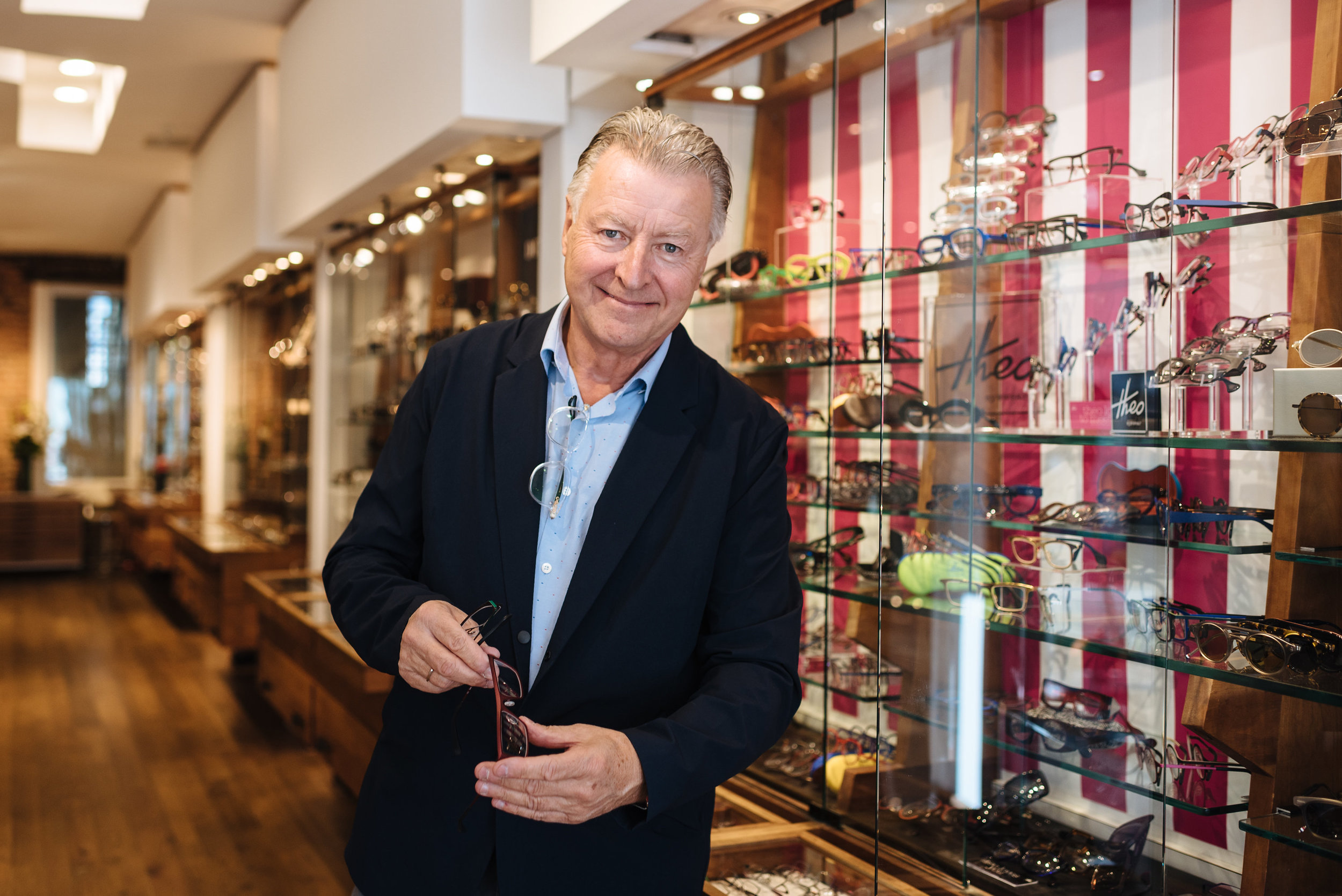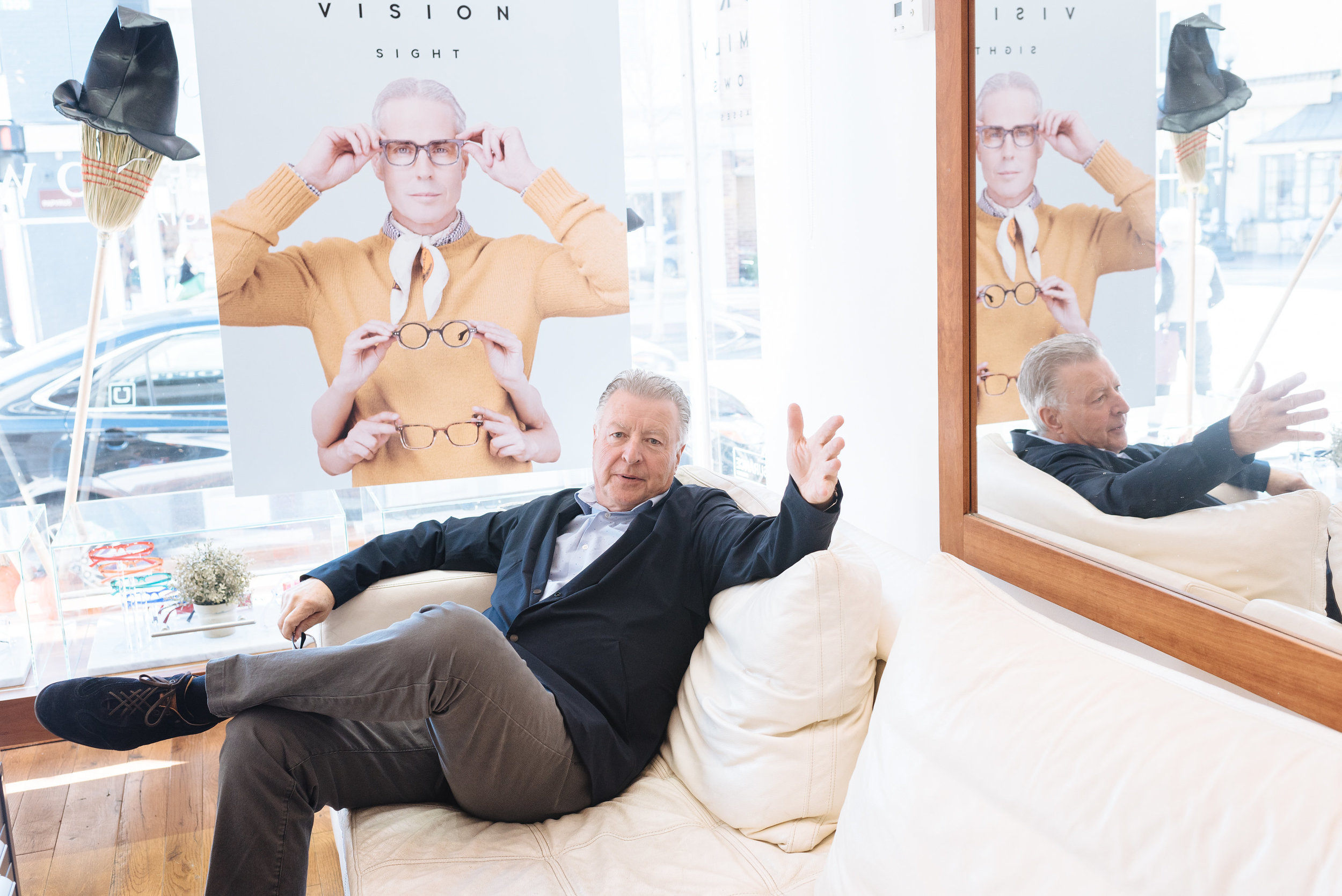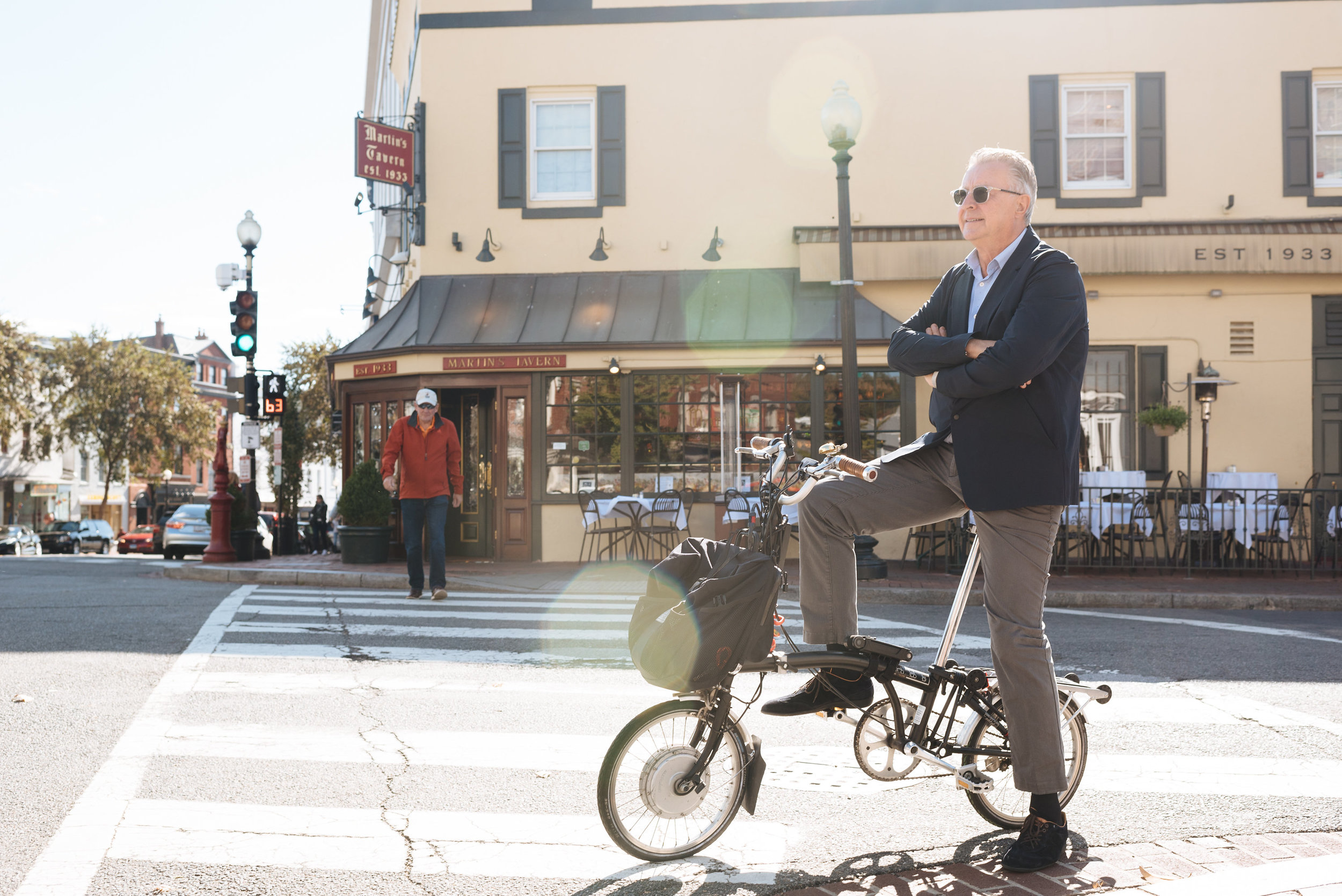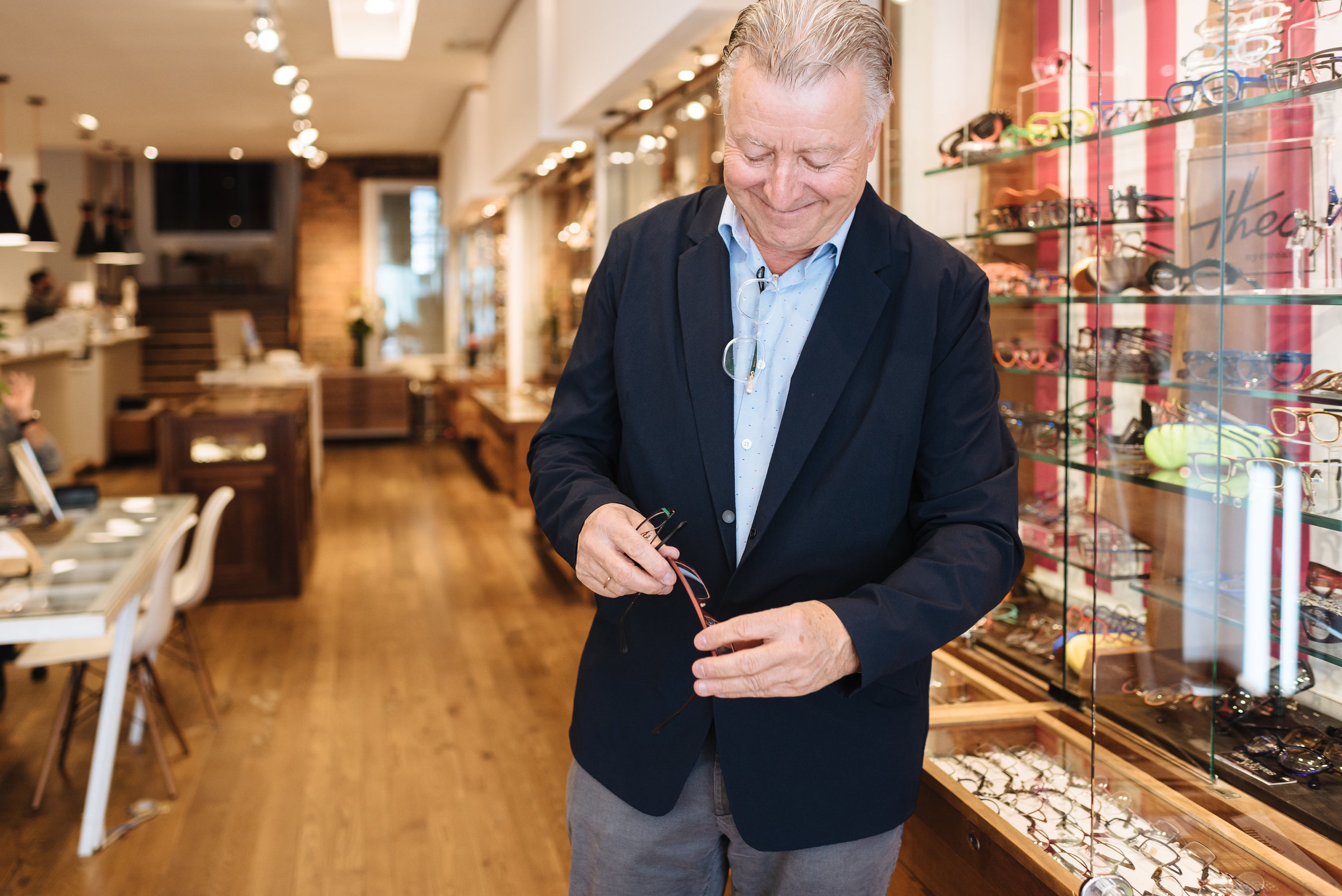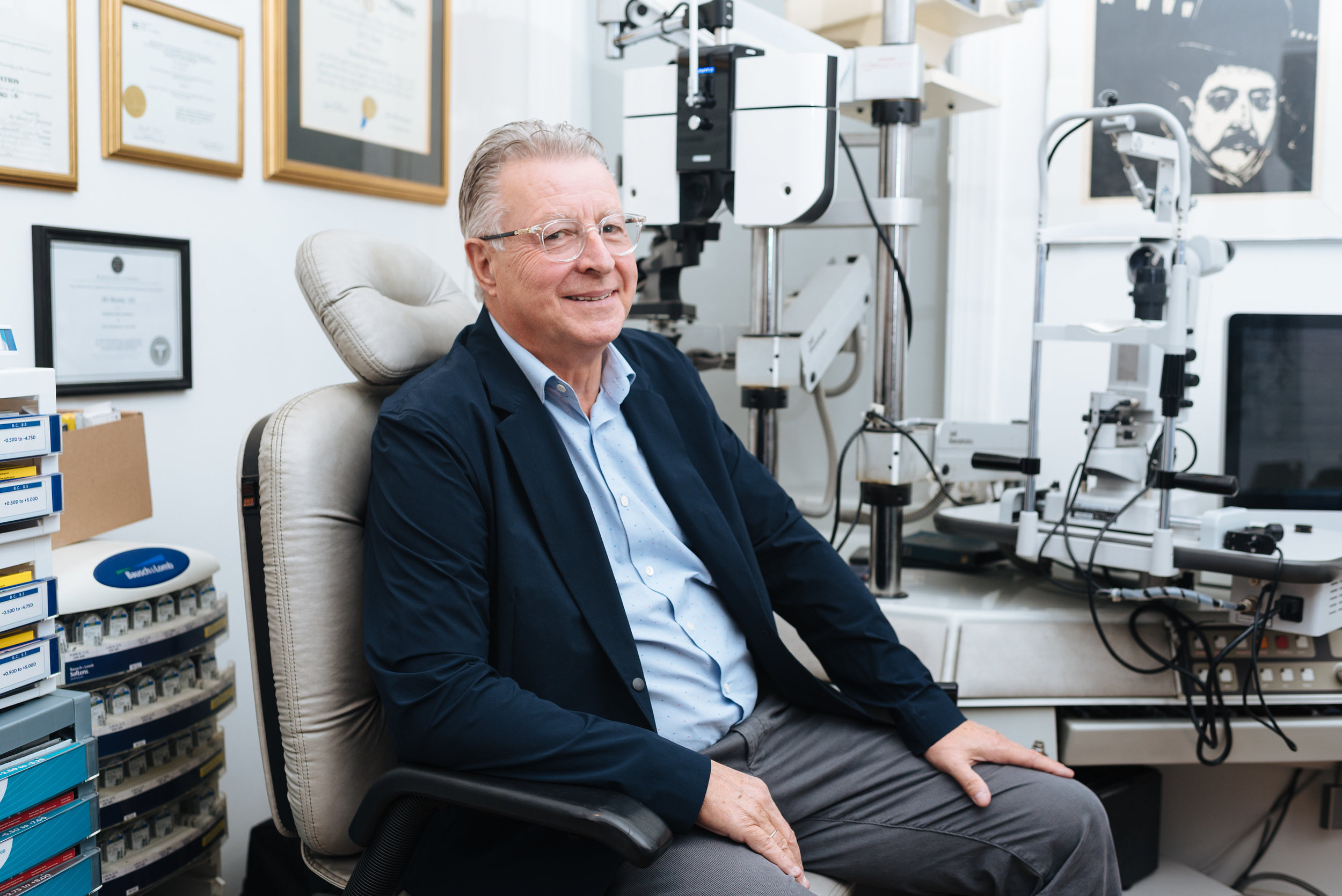‘I Learned Optics From The Old Way Up’
Joost Voorthuis walked into an eyeglass store in Amsterdam by chance.
Born in Holland, the twenty-something had spent a year studying architecture, but didn’t have the patience for it. When he wandered into the shop, something clicked.
‘I learned from an old man there, 74 years old. I said I only want to work for that guy. I want to work for three months for free, and I want to be totally taught how to do it. I learned from the old way up.’
Joost spent the next three months cutting and grinding lenses, and learning the business inside and out. It was the early 70s, and—optically—Europe was ahead of the U.S.
‘Glasses were seen as more of a fashion item there. When I started in Georgetown a few years later, it was the traditional way of selling eyeglasses. A man would come in, go to the rack, pick up a frame—looks good, feels good, I’ll buy it. I would say, ‘What is wrong with this guy—doesn’t he want advice about what looks good or doesn’t?’ That was the olden days. Glasses were a totally utility product.’
Those olden days in Georgetown were set in motion as early as 1972, when Joost spent six months here; what was supposed to be a temporary detour on his way home from Australia. Instead, he fell in love with Georgetown, and spent the next five years going back and forth between DC and Holland.
In 1978, Joost made a permanent move and purchased a small storefront from his brother on the corner of P Street and Wisconsin Avenue, where he opened Georgetown Optician. A few years later, he moved the business to his current space at 1307 Wisconsin Avenue—renting from an elderly woman who lived upstairs.
‘She was a grand old lady. She would take her chair to the back of the stairs and sit there and criticize people’s dress. ‘Can’t you dress up for Georgetown!’ she’d always say. When she died in 1984, in her will she said the only one she wanted to sell the building to was me. That’s when I bought it.’
By that time, the eyeglass world was more integrated with the fashion industry. Georgetown Optician was at the forefront of the movement.
‘We moved our product lines to very high-end. It takes time to cultivate a nice customer base, but that base got bigger and bigger and people starting coming from out of town to visit the store.’
As Joost’s business grew, so did his family. He and his wife had three children, two of whom are still active in the business. His oldest son, Pierce, was involved from the time he was 15, and returned after graduating from USC with a business degree. Their youngest daughter, Juliette, joined the business shortly thereafter.
Together, the Voorthuis family cultivated the principle of high-end optical collections.
‘The Prada and Gucci, those are all lines that some designer put his or her name to and that’s it. Usually the quality is not what it should be. We are a step up from that. We do private optical manufacturers. We’ve ridden that whole wave. In each city in the U.S., there are maybe one or two optical stores that do what we do.’
With three additional locations throughout the region, Georgetown Optician continues to reinvent itself. The store most recently received international attention for its award-winning 2015 ad campaign. Created by Design Army, the Wes Anderson-esque video spot, ‘Our Family Knows Glasses’, won everything from an Emmy to Best Fashion Film at the Madrid Fashion Film Festival—Adweek calling it the ‘wildest’ optician ad you’ve ever seen.
‘Pierce went to school for business, but as a secondary thing, he took film. We got to know the Design Army owner and her husband as customers and started a conversation with them, and Piece said, ‘Dad, we have to do this, this is so fun. We did it because we were always known for our product, but at some point we decided to stop branding what we had in the store and start branding the name Georgetown Optician.’
In July, that name will celebrate 40 years in Georgetown. The industry has changed drastically since then—glasses once seen as nothing more than a necessity for many to function.
‘People couldn’t care less what they looked like. Now glasses have become a fashion product. You have five, six skirts or pants—why not have three or four pairs of glasses? People see it more as a fun, wearable product.’
Georgetown Optician’s longevity is no small feat, particularly as online business challenges the brick and mortar model. Joost credits much of his success to a ‘phenomenal’ customer base in Georgetown, as well as a young team who breathes new life into the business, while still offering full-range service.
‘When the new people start working here they always say, ‘I’m an optician.’ I give them the lens and machine and say, ‘Go ahead and make the glasses.’ And they just look at me. I say, ‘No, you’re a salesman. An optician knows and understands everything about glasses.’ It’s like a modern apprenticeship. We teach them.’
In January, Joost will begin to take more of a background, advisory role in the business. He’s 67 and has other interests—taking his small wooden boat out from Columbia Island; riding his extremely Dutch-looking bicycle around town—but has no intention of ever giving up the business completely.
‘At 77, I’ll probably still be putting in my two cents. It’s been a very interesting life.’
